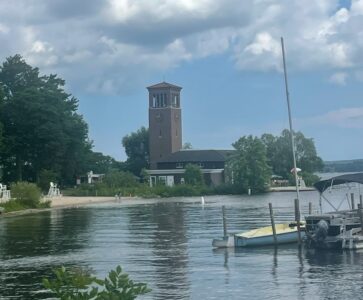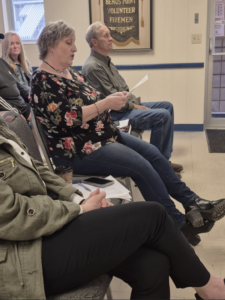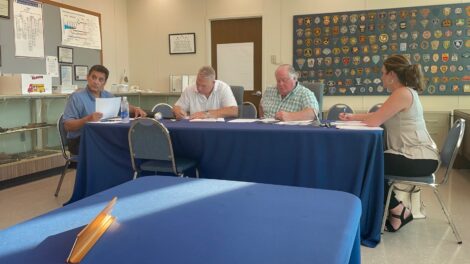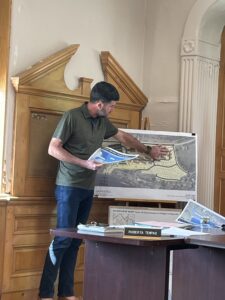Preserve And Enhance
Chautauqua Tells Property Owners Changes Are Coming
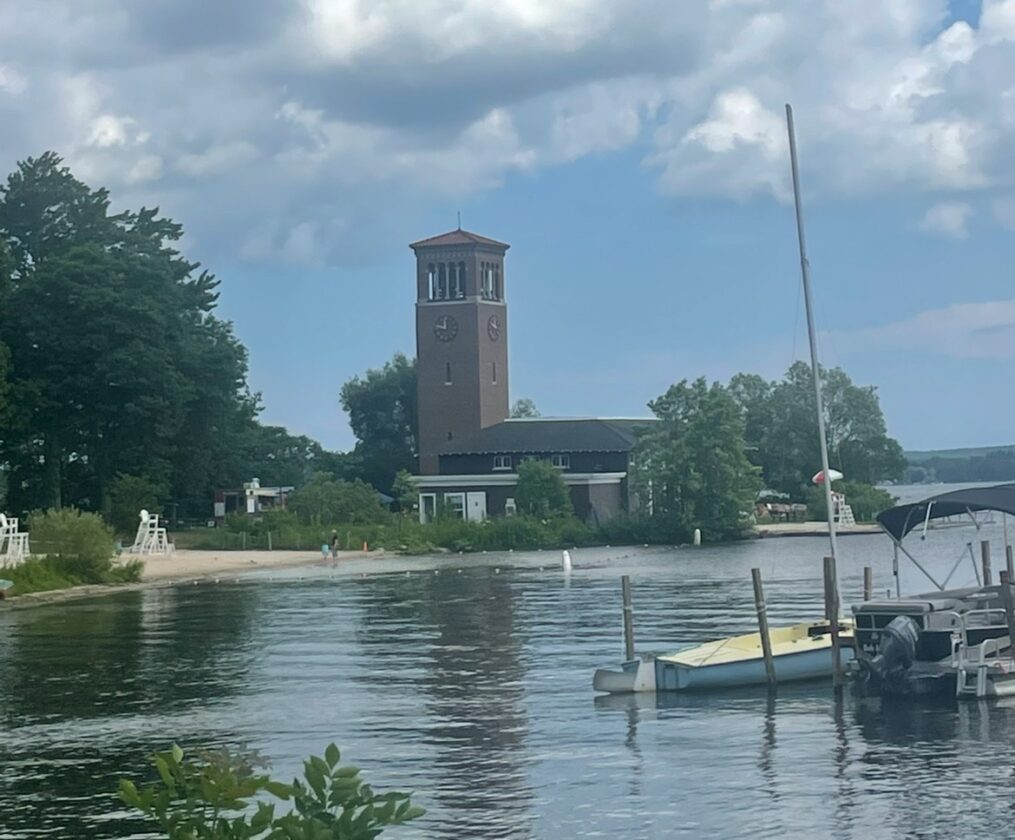
Attendance at Chautauqua Institution has been “solid,” but is not meeting projections this year. P-J photo
For those outside its gates, Chautauqua Institution stands as it always has.
What one can see from Route 394 is pristine. Golfers are on the links at the Chautauqua Golf Club. Sailboats can be seen in the north basin of Chautauqua Lake. The arts and education program is in full swing. Out-of-state license plates are a common sight in Lakewood.
But all is not business as usual inside the gates, as some of the institution’s recent communications with property owners make clear. The institution has hired a firm to conduct its search for a new president after former President Michael Hill resigned earlier this year to take a position at the helm of Macon College. Kyle Keogh stepped in as the institution’s interim CEO while the search continues – and the interim CEO has been busy.
Keogh accepted the interim CEO post in order to keep a steady hand during a time of transition. He has met with business owners, community leaders and representatives from denominational houses and religious organizations. Keogh recently told property owners that he is hearing from property owners that the institution should pull back from year-round programs and focus instead on additional programs two weeks before the annual summer Chautauqua Institution season begins and two weeks after the season ends. The community seems happier with the patron experience, including ticketing and food and beverage service.
That’s the good so far.
The bad?
Institution property owners received a lengthy update from Keogh and the institution board last week that makes clear budget issues are going to bring changes to the institution’s programs and staff in the coming year. Keogh told The Post-Journal that the Chautauqua community, including its Board of Trustees, is actively engaged in shaping the institution’s future.
After a period of rising discontent among some property owners largely driven by questions about the institution’s spending priorities, Keogh is working to actively engage property owners during a time of transition.
“With a presidential transition underway, the board has launched a comprehensive review of operations to better understand current challenges and opportunities,” Keogh told The Post-Journal. “Last week, a communication was shared with staff and the broader community outlining: the board’s review of finances and operations to ensure long-term financial resilience and mission relevance; a timeline for decisions that will begin impacting the institution starting in 2026; (and) a commitment to continued engagement, with additional opportunities for input planned in early and late August.”
LAGGING ATTENDANCE PROMPTS REVIEW
Keogh recently told property owners in a community update that it doesn’t appear likely the institution will meet its attendance goals for the 2025 season. Those goals had included growth from the 2024 season. Keogh told property owners that the 2026 season will include changes to announced themes as opportunities arise to bring in new speakers that are “exciting and meaningful” to the community while, at the same time, building on the 2025 theme weeks that have performed well.
“This season has reinforced Chautauqua’s commitment to excellence, with strong programming and positive feedback,” Keogh told The Post-Journal. “While attendance has been solid, it has not met projections – partly due to reduced Canadian travel. In response, the team is proactively reviewing early plans for 2026, including adjustments to program themes and partnerships. Recognizing that some markets may not rebound, the institution is preparing to compete more strategically in a changing landscape – and is ready to meet that challenge.”
Keogh also discussed the Chautauqua Institution Board of Trustees Pathway to Financial Resilience with property owners. Keogh and the institution board said it’s important to evaluate the institution’s programs in terms of relevance and affordability while also doing more to make sure the institution maintains its financial health because the institution’s spending is greater than yearly revenue.
“Attending to our programmatic and financial health is going to require changes and those changes are likely to include reductions in staff, programming and services,” the fact sheet sent to property owners states. “Our intention is to prioritize preservation of those elements that are most important to our mission and the patron experience. We hope you will agree that the greater goal of assuring Chautauqua is here for another 150 years is paramount and that the difficult choices we must make today are worth it to assure Chautauqua’s future.”
BUDGET IMPACTS
Hill responded to a Post-Journal editorial in April by saying Chautauqua Institution remains on firm financial footing, and that the institution’s ongoing strategic planning was not a response to dire financial straits but rather a proactive approach to ensuring long-term sustainability. He cited Chautauqua’s strong bottom line, with $8.4 million in cash reserves and an additional $4.7 million in state and federal reimbursements pending, as a sign of the institution’s financial strength. Hill also cited the institution’s $150 million Boundless campaign which is expected to reach its goal next year.
Keogh and the institution board said growing the institution’s endowment is important, but doesn’t help short-term budget issues.
“Our endowment is the best it has ever been, hovering around $150 million,” the institution said in its Pathway to Financial Resiliency fact sheet. “However, that does not translate into millions of new dollars to spend. We can only take a small percentage (about 4%) out of the endowment each year, which limits our ability to offset annual expenses. For example, a $1 million increase in endowment at a 4% distribution rate translates to $40,000 more flowing into our budget to cover operating expenses. So, to have a $1 million impact on our spendable cash, we would need to grow endowment by $25 million. We would need to increase our endowment by another $125 million to $150 million if we wanted to continue under our current operating mode.”
None of that means the institution is in dire financial straits. But it does mean changes are coming. Keogh and the institution board told property owners that parking and ticket revenues have not yet returned to pre-pandemic levels while one-time money such as COVID-19 grants and non-recurring donor gifts were used to pay recurring expenses like salaries – which is hitting the institution’s budget now that the revenue is drying up. At the same time expenses are growing higher than possible price increases can absorb in areas that Keogh and the institution board says include seasonal staff, increasing program and production costs and additional staff working to further Chautauqua’s strategic plan. The fourth issue the institution is facing, according to Keogh and the institution board, is a multi-year budget developed in May 2024 that was supposed to create a sustainable financial model by 2028. But aspects of that budget changed and, by the time the institution board was approving a 2025 budget last winter, found the assumptions in the five-year budget needed to be revamped. A working group that includes staff, trustees and a non-trustee financial advisor is working on a new model.
“We cannot continue to spend at our current rate,” Keogh and the board said in the Pathway to Financial Resiliency fact sheet. “That is why we are focused so heavily on right-sizing the organization and gaining greater control over expense increases.”
PRESERVE AND ENHANCE
At the same time, the board has invited Chautauquans to participate in open forums with consultants from Heidrick & Struggles, the firm leading the search for a permanent president, and the institution’s search committee Monday, July 21 and Tuesday, July 22, in the Hall of Philosophy. Insights gathered during these sessions will help shape the presidential search prospectus – a document that defines the leadership opportunity, outlines the institution’s vision for the future, and describes the qualities sought in the next president.
Despite the transitions inside the gates, Keogh said the community outside Chautauqua’s gates should know the institution intends to remain an economic and cultural driver for Chautauqua County for years to come.
“Chautauqua is undertaking this work from a position of financial strength, with the goal of ensuring long-term sustainability and mission relevance,” Keogh told The Post-Journal. “This process is about preserving and enhancing Chautauqua’s role as a cultural and economic driver for the region and beyond.”

